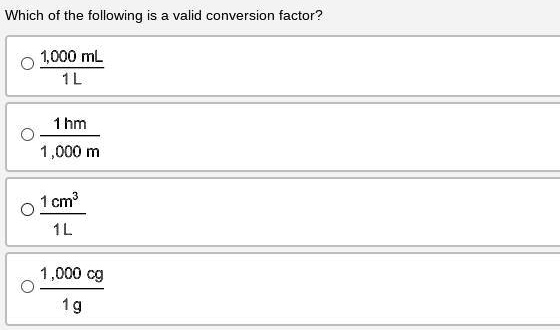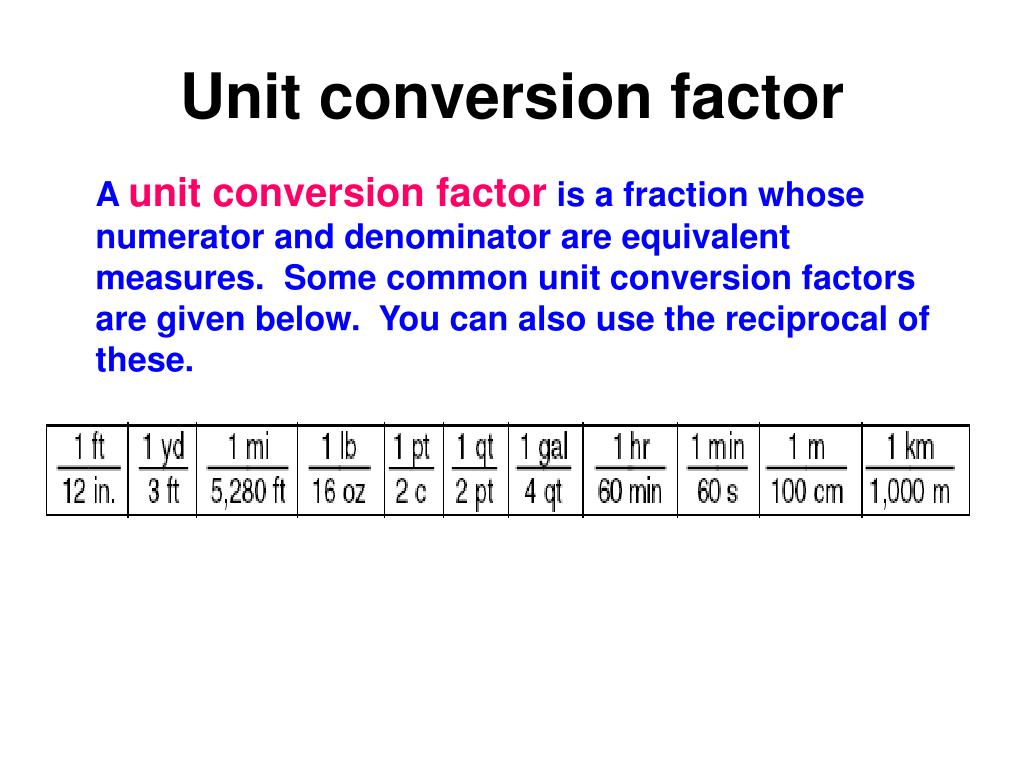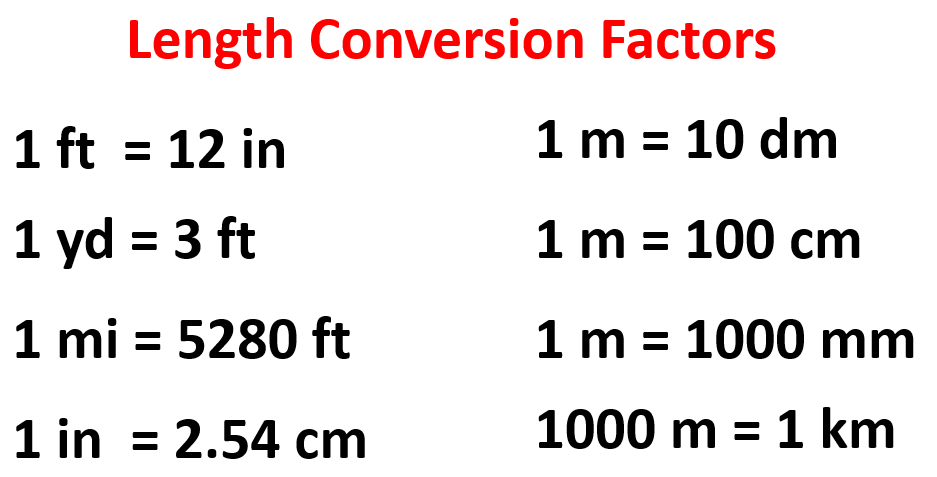Which Of The Following Is A Valid Conversion Factor

The seemingly simple question of "Which of the following is a valid conversion factor?" has become a focal point in classrooms and professional settings, revealing a deeper need for clarity and consistency in measurement and calculation. Errors arising from incorrect conversion factors can have serious consequences, ranging from flawed scientific experiments to engineering disasters. The ability to confidently identify and apply correct conversion factors is thus a critical skill across numerous disciplines.
At its core, a conversion factor is a numerical ratio used to express a measurement in different units. This article delves into the nuances of valid conversion factors, exploring common pitfalls, highlighting the importance of dimensional analysis, and examining how these concepts are applied across various fields. We'll examine why understanding these principles is crucial for accurate calculations and avoiding potentially costly mistakes.
Understanding Conversion Factors
A valid conversion factor is a ratio that represents the equivalence between two different units of measurement. For example, 1 inch is equal to 2.54 centimeters. Therefore, 2.54 cm / 1 inch and 1 inch / 2.54 cm are both valid conversion factors for converting between inches and centimeters.
The key is that the numerator and denominator represent the same physical quantity expressed in different units. Using this principle, one can convert between any two units of the same type of measurement by multiplying the original value by the appropriate conversion factor. This process is often referred to as dimensional analysis.
The Importance of Dimensional Analysis
Dimensional analysis is a powerful tool for ensuring the accuracy of calculations involving conversion factors. It involves tracking the units throughout the calculation. This practice helps to identify errors in the setup of the problem and ensures the final answer is in the correct units.
For example, if you need to convert 5 inches to centimeters, you would multiply 5 inches by the conversion factor 2.54 cm / 1 inch. Notice that the "inches" unit cancels out, leaving you with the answer in centimeters. This cancellation of units is a hallmark of correct dimensional analysis.
Common Pitfalls and Errors
One of the most common mistakes is using an inverted conversion factor. For instance, attempting to convert inches to centimeters by multiplying by 1 inch / 2.54 cm would result in an incorrect answer with the units of inches squared per centimeter (in2/cm), clearly indicating an error.
Another error arises from using incorrect or outdated conversion factors. Always rely on reliable and reputable sources, such as the National Institute of Standards and Technology (NIST), for accurate values. Using approximations without understanding their limitations can also lead to inaccuracies, especially in applications requiring high precision.
Real-World Applications
The application of valid conversion factors is widespread across various disciplines. In engineering, it's critical for designing structures, calculating material properties, and ensuring compatibility between components manufactured using different measurement systems. Accurate conversions are vital for safety and reliability.
In chemistry, conversion factors are essential for stoichiometric calculations, converting between moles, grams, and volumes. Incorrect conversions can lead to errors in experiments and incorrect dosage calculations in pharmaceuticals.
Medicine relies heavily on accurate conversions for medication administration, dosage calculations, and interpreting lab results. A miscalculation could have severe, even life-threatening, consequences for patients.
Specific Examples
Consider converting miles to kilometers. The accepted conversion factor is approximately 1.609 kilometers per 1 mile. Therefore, to convert 10 miles to kilometers, you would multiply 10 miles by 1.609 km / 1 mile, resulting in 16.09 kilometers.
Another example: converting pounds to kilograms. The conversion factor is approximately 0.4536 kilograms per 1 pound. So, to convert 150 pounds to kilograms, multiply 150 pounds by 0.4536 kg / 1 pound, resulting in 68.04 kilograms.
These examples illustrate the consistent application of the principle: the units you want to eliminate must be in the denominator of the conversion factor.
Tools and Resources
Numerous online tools and resources are available to assist with unit conversions. NIST provides comprehensive tables and databases of conversion factors for various units. Many scientific calculators and software packages also include built-in unit conversion functions.
However, relying solely on tools without understanding the underlying principles can be risky. It's crucial to develop a strong understanding of dimensional analysis and the concept of valid conversion factors to ensure accuracy and to be able to identify potential errors.
Moving Forward
Ensuring widespread understanding of valid conversion factors requires a multi-pronged approach. Educational institutions should emphasize the importance of dimensional analysis and provide ample practice opportunities. Professionals should adhere to strict quality control measures and utilize reliable resources for conversion factors.
By promoting a culture of accuracy and attention to detail, we can minimize errors arising from incorrect conversions. This will foster greater confidence in scientific research, engineering design, and countless other fields that rely on precise measurements.















